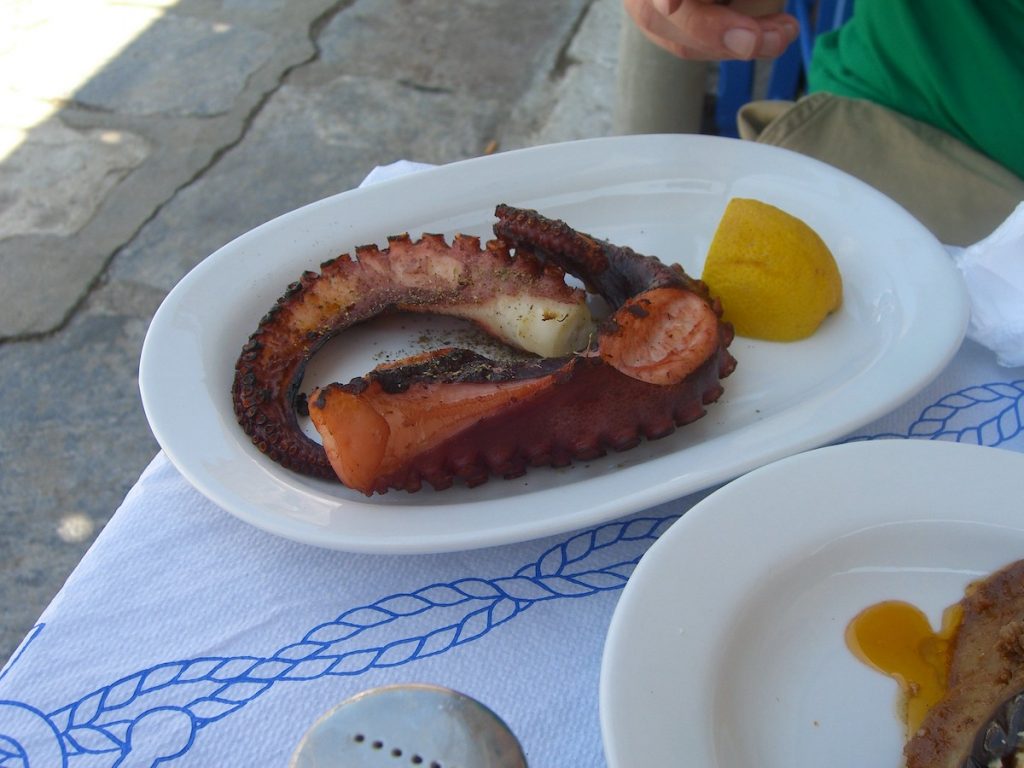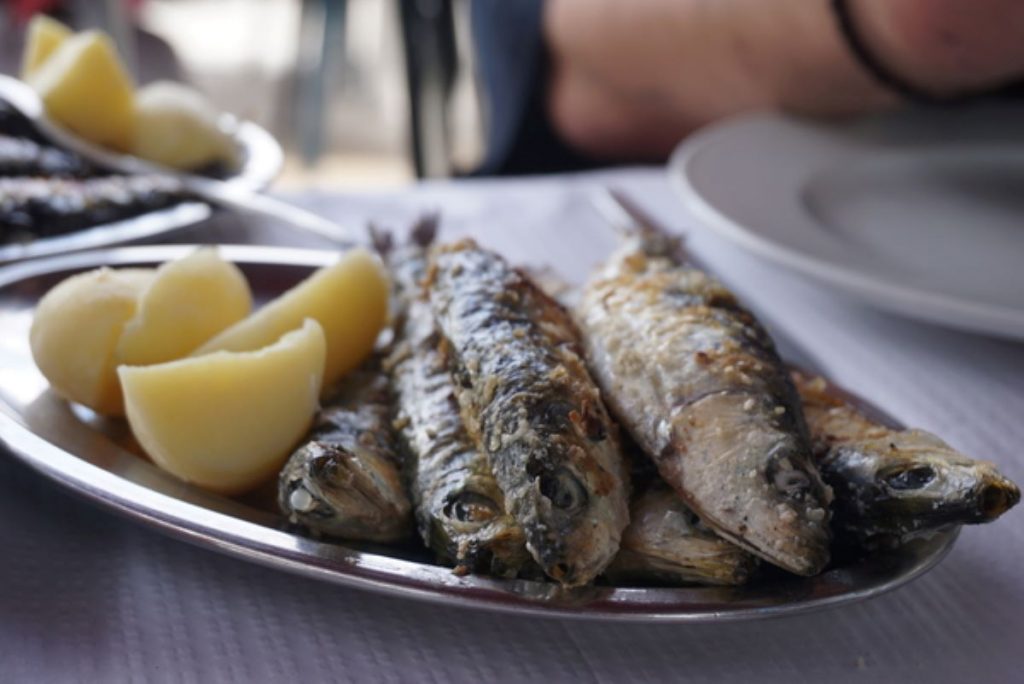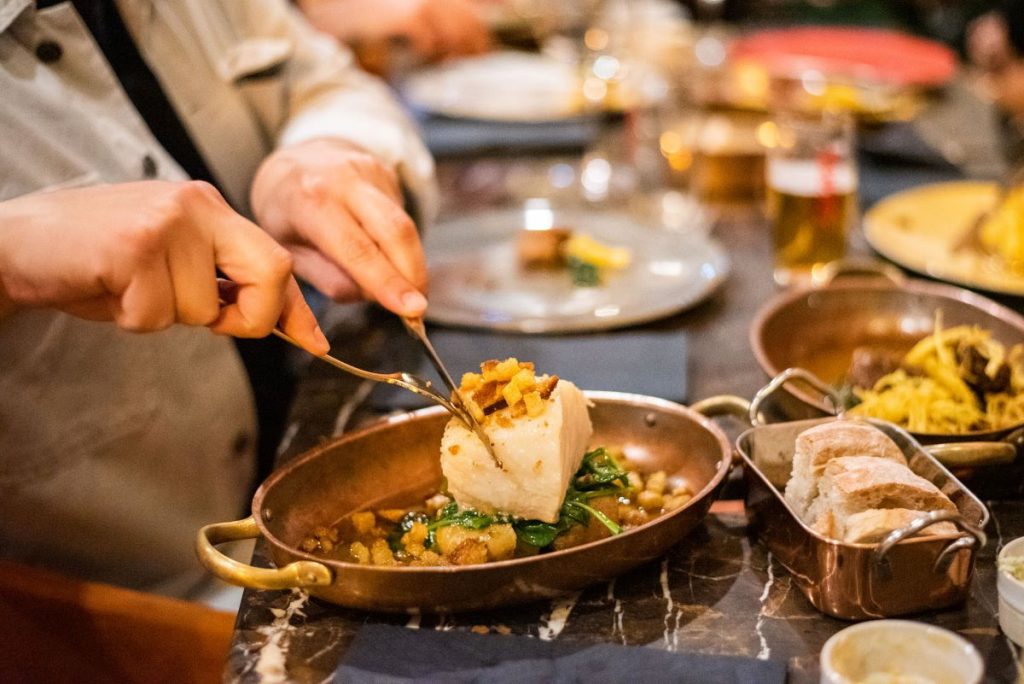In Portugal, seasonal eating isn’t just a foodie trend or wellness fad; it’s an integral part of the country’s cuisine and culinary culture. About a third of its land supports agriculture, producing everything from almonds and beans to peaches and persimmons. Cooks incorporate all these ingredients into classic dishes. Many of these are traditionally tied to certain times of year.
Eating seasonally in Portugal ensures your food is fresher, more flavorful, sustainable, and authentic. Use this guide to figure out which produce and dishes to try, according to both the time of year and the region you’re visiting.
Before we dive in, here’s a quick note: the list of fruits, vegetables, and other locally sourced foods in Portugal is incredibly long. We’ll focus on a few of the most notable products associated with different seasons and regions. We’ll also share specific recipes that highlight them. Some of these foods are available in other seasons and parts of the country as well.

What to eat during spring in Portugal
Springtime brings a plethora of fresh fruits and veggies to the Portuguese table. You’ll find a wide variety of citrus fruits from the Algarve. Farmers cultivate succulent strawberries all over the country. The Central Region (north of the capital) produces crimson cherries in abundance. This is also the season of the nêspera (loquat), a small orange fruit that grows on trees everywhere from the Algarve to courtyards in central Lisbon.
As for savory produce, spring is the peak season for favas (broad beans) and asparagus. One of the most popular ways to enjoy broad beans is in the hearty stew of favas com chouriço. This dish pairs them with sliced pork sausage. In Alentejo or Trás-os-Montes in the northeast, try fresh asparagus. Locals often serve it as a side.
Spring is also a great time to eat fresh seafood on Portugal’s coast. Try mackerel, corvina, sea bass, and sea urchins if you can find them. If you’re visiting close to Easter, look for chocolate-and candy-coated almonds. Farmers harvest these nuts in the Algarve and Alentejo in late summer and fall. However, they’re traditionally associated with this springtime holiday.

Insider’s tip: Eating seasonally at home is often easier than when traveling to new countries. If you’d like to taste the best of Lisbon’s culinary culture at any time of year, join our Lisbon Food Tour. You’ll enjoy a journey through the city’s traditional dishes and local wines.
Seasonal summer bites
Summer in Portugal is prime time for fresh produce, especially fruits from the Algarve and Alentejo. Try melão and meloa (both varieties of melon). Enjoy watermelon, plums, grapes, berries, apricots, and nectarines. June to September is peach season in Cova da Beira, a section of the Central Region close to the border with Spain. This area is legendary for its stone fruits.
Summer is also the best time to try fresh figs in Portugal. These incredibly sweet and juicy fruits are especially abundant in the Algarve. Another unique product of this region that’s harvested in late summer is alfarroba (carob).

Fun fact:
- Portugal is the world’s largest producer of carob, which explains why you’ll find it in many traditional desserts and even bread.
Tomatoes and potatoes play an important role in many Portuguese dishes. Both are widely available during the summer months. Cooks often serve them with seafood. Tomatoes might be blended into a stew like cataplana. Potatoes are a common side dish for grilled fish. If there’s one fish that represents summer in Portugal, it’s the sardine.
Grilled sardines are a quintessential summer food across the country. In Lisbon, you can find them on every street corner during the Festas de Santo António in June. Vendors usually serve them atop a slice of Portuguese bread or broa. Octopus is also a favorite summer dish. If you’re visiting the small coastal towns of the Algarve or Central Region, look for it on menus.

As for sweets, two treats come to mind:
- The famous três delícias do Algarve is a rich cake. It isn’t necessarily eaten in summer, but it features two seasonal specialties—carob and (dried) figs—plus almonds.
- The beloved bolas de Berlim are cream-filled doughnuts. You can buy them from vendors on almost every beach in Portugal once summer starts.

Must-try fall foods
Although Portugal doesn’t celebrate Thanksgiving, this time of year still boasts lots of seasonal specialties:
- In the Algarve, fall brings pomegranates and persimmons. If you haven’t tried the latter, this is a great place to do so. Sample both varieties of dióspiro (persimmon). One is fairly firm, sort of like an apple. The other is super soft and sweet.
- Apples are harvested almost all year round in Portugal. Try the local variety from Alcobaça (in the West Region, just a quick day trip from Lisbon from Nazaré). Alcobaça apples are actually a hybrid of 9 other varieties. These apples are in season from August to November.
- Farther north, in Trás-os-Montes, the local fall specialty is the castanha portuguesa (sweet chestnut). The simplest—and arguably best—way to enjoy chestnuts is freshly roasted with nothing but salt.
- Once the weather starts to turn chilly, vendors pop up all over the streets of Lisbon and other cities. They sell roasted chestnuts in paper cones; you can get a dozen for just a few euros. Chestnuts are also common in many traditional recipes, either whole, chopped, or puréed.
We can’t talk about fall without mentioning wine:
- The annual vindima (grape harvest) can start as early as August in the south. It hits full stride in September and October.
- Although you can drink Portuguese wine year round, this is a great time to visit wine-producing regions like Alentejo and the Douro Valley. You can experience the harvest firsthand.
- If you’re in Lisbon, take the one-hour trip to Palmela (near Setúbal) for the traditional Festa das Vindimas. Drinking wine alone may not technically qualify as eating seasonally. However, you can always pair your glass with a selection of Portuguese cheeses.

Check out the grape harvest season and pair your wine with some Portuguese cheese.
The best winter foods
Across most of Portugal, the winter months are chilly but not exceedingly cold. You can still enjoy plenty of fresh produce from December to February, including:
- Famous oranges from the Algarve and other citrus fruits like clementines and tangerines.
- Kiwi is also in season in the north and center of the country.
- One fruit that you absolutely have to try if you’re visiting Portugal in winter is the Pêra Rocha. This variety of pear grows in the West Region and holds a Protected Designation of Origin. It is absolutely delicious on its own. You can also try it in the classic dessert of pêra bêbada (drunken pear). Cooks simmer the fruit in sugar, spices, red wine, and Port wine.
- Couve is probably the type of vegetable most closely associated with winter in Portugal. It’s in season from roughly November to April. This category includes various kinds of cabbage, Brussels sprouts, cauliflower, and leafy greens like couve-portuguesa. This last variety is similar to kale or collard greens. It is the star ingredient of caldo verde, an iconic kale soup that also contains puréed potatoes and chouriço. Locals traditionally eat this soup on New Year’s Eve.
Other hearty winter recipes often include bacalhau (salt cod). This fish is far from local in origin but highly traditional during the holiday season. There’s also Portuguese cozido, a hearty stew with a little bit of everything—various meats, cabbage, potatoes, and more. It’s the perfect meal to warm you up on cold days. If you visit the island of São Miguel in the Azores, try the local version. They cook it underground with volcanic steam.
Portugal’s islands also have their own specialties:
- São Miguel, the largest island in the Azores, is famous for its incredibly sweet pineapples. Farmers grow these in greenhouses.
- Madeira, on the other hand, is known for its unusually small and sweet bananas. Growers produce these fruits year round in São Miguel and Madeira, respectively.

Bacalhau paired with seasonal veggies is divine.
Ready to eat like a local? Join our Lisbon Food Tour for a journey through the city’s most delicious neighborhoods. Experience the heart of Portuguese culture, one bite at a time. Enjoy traditional dishes and local wines along the way.

